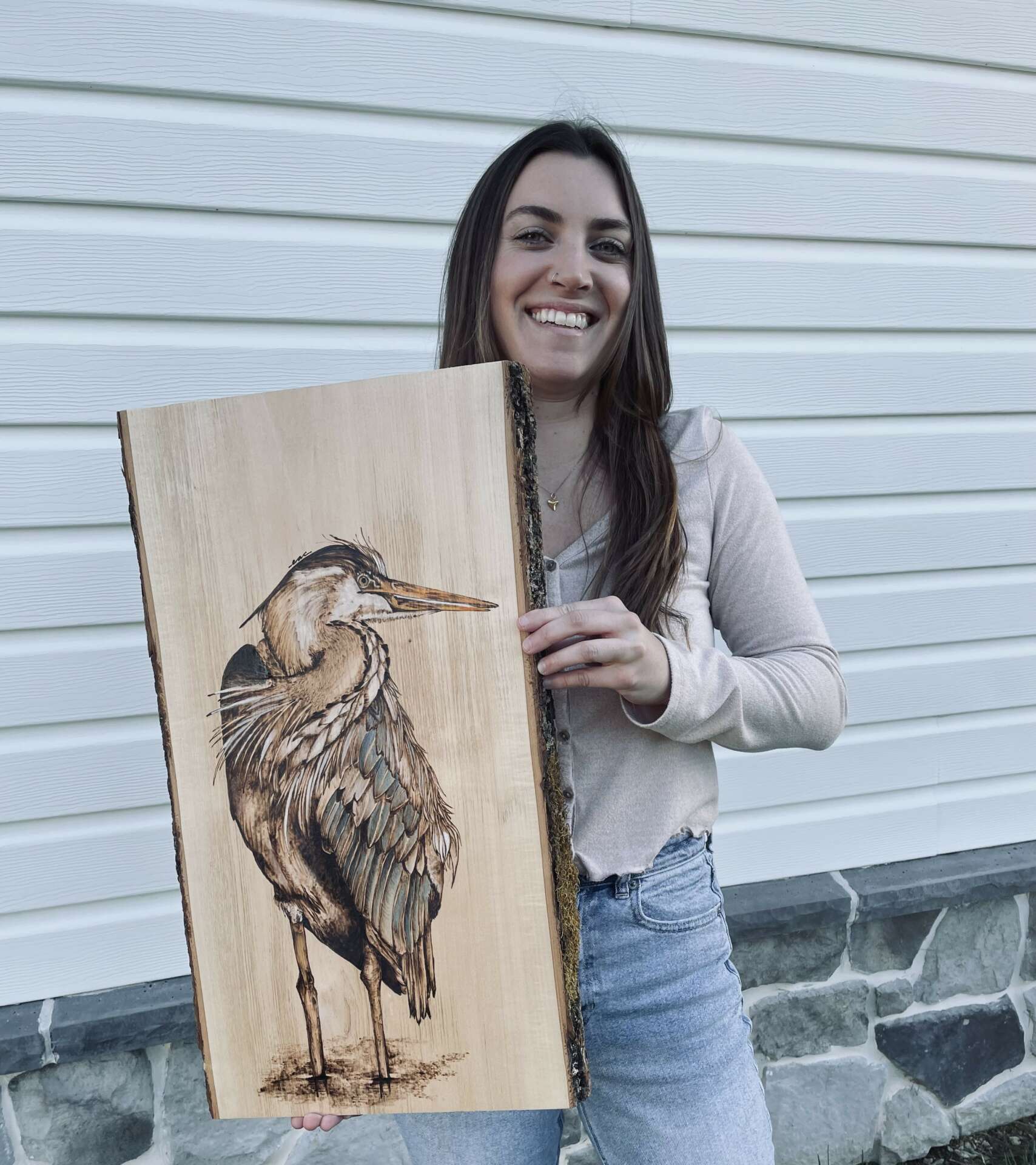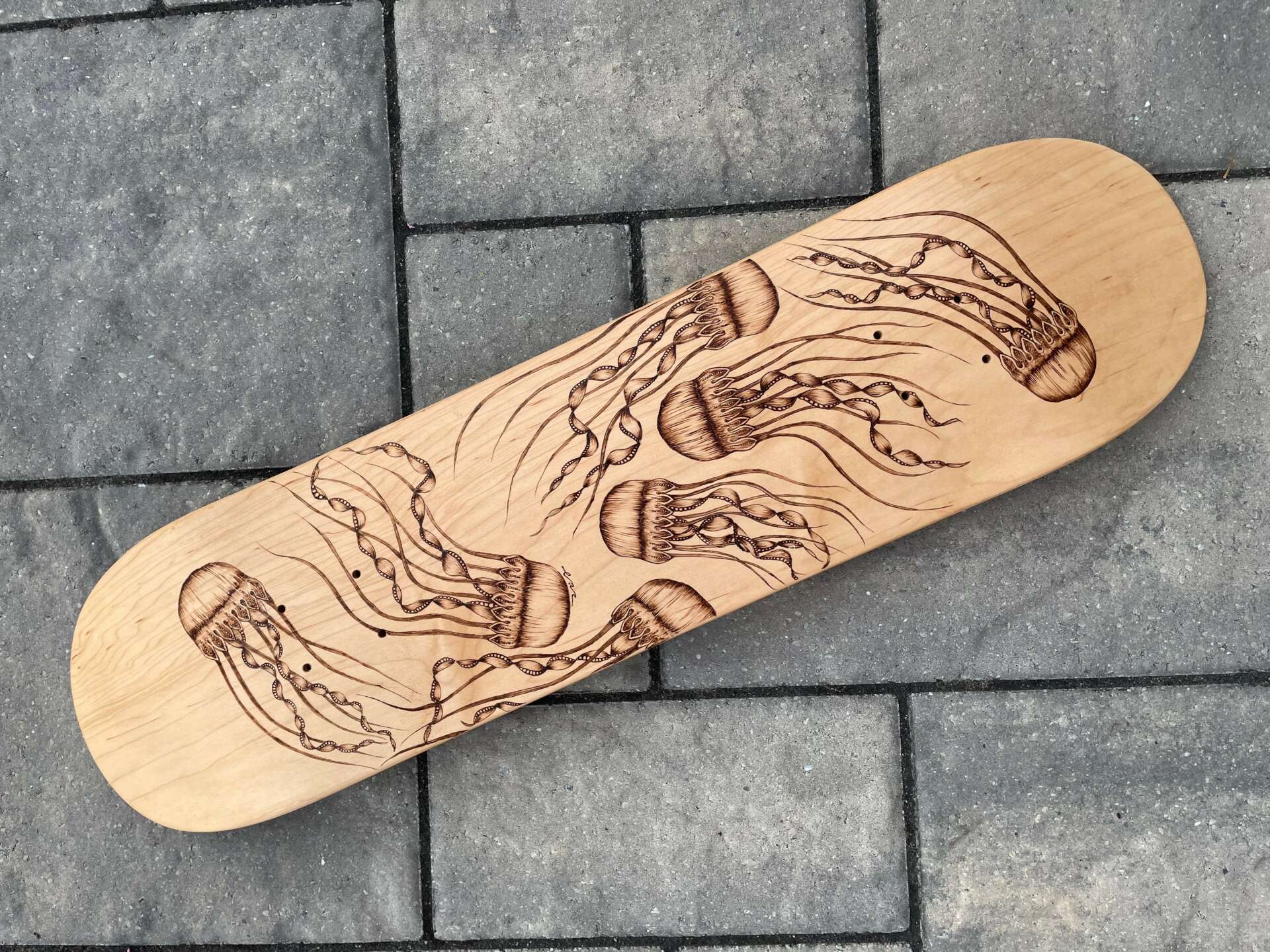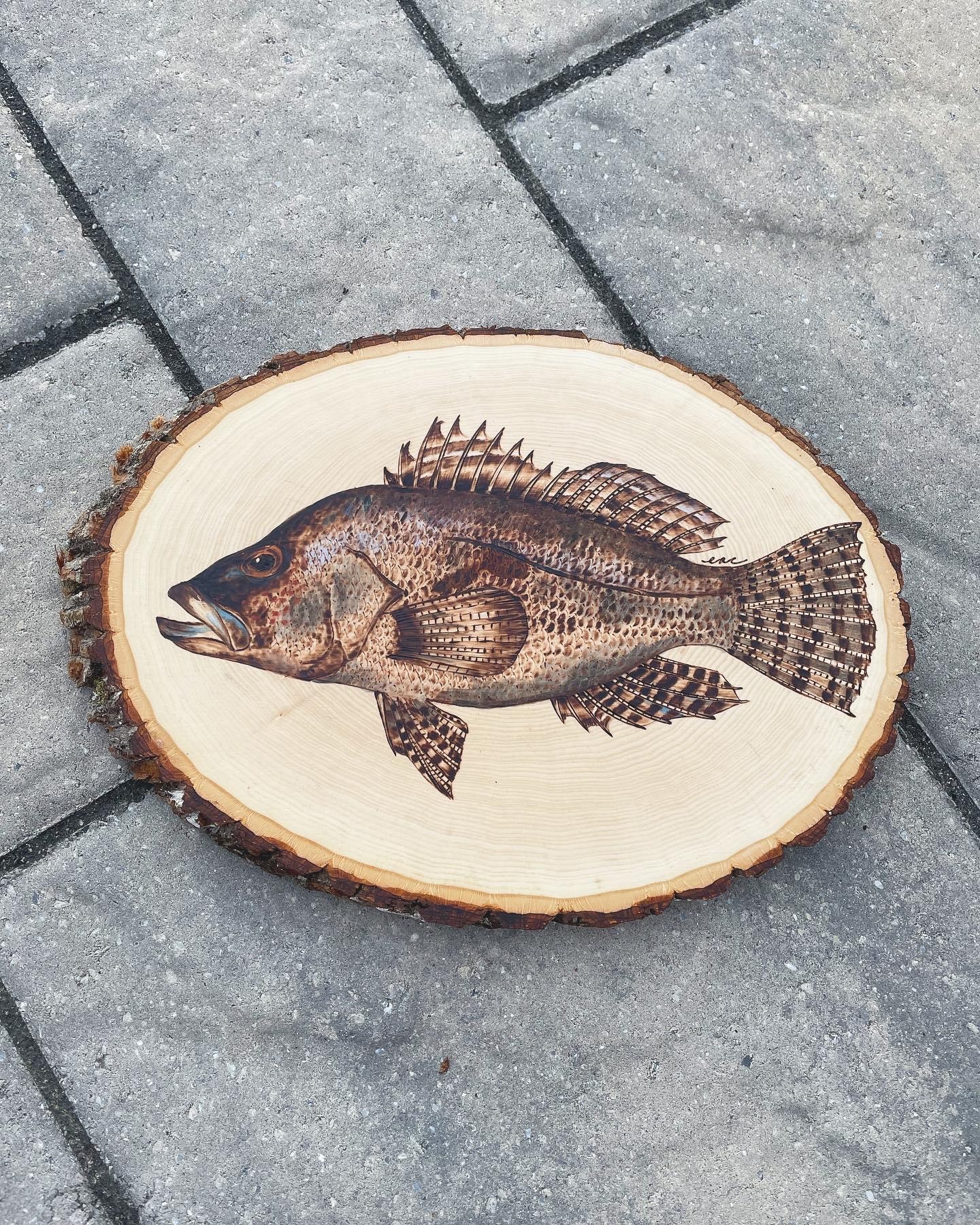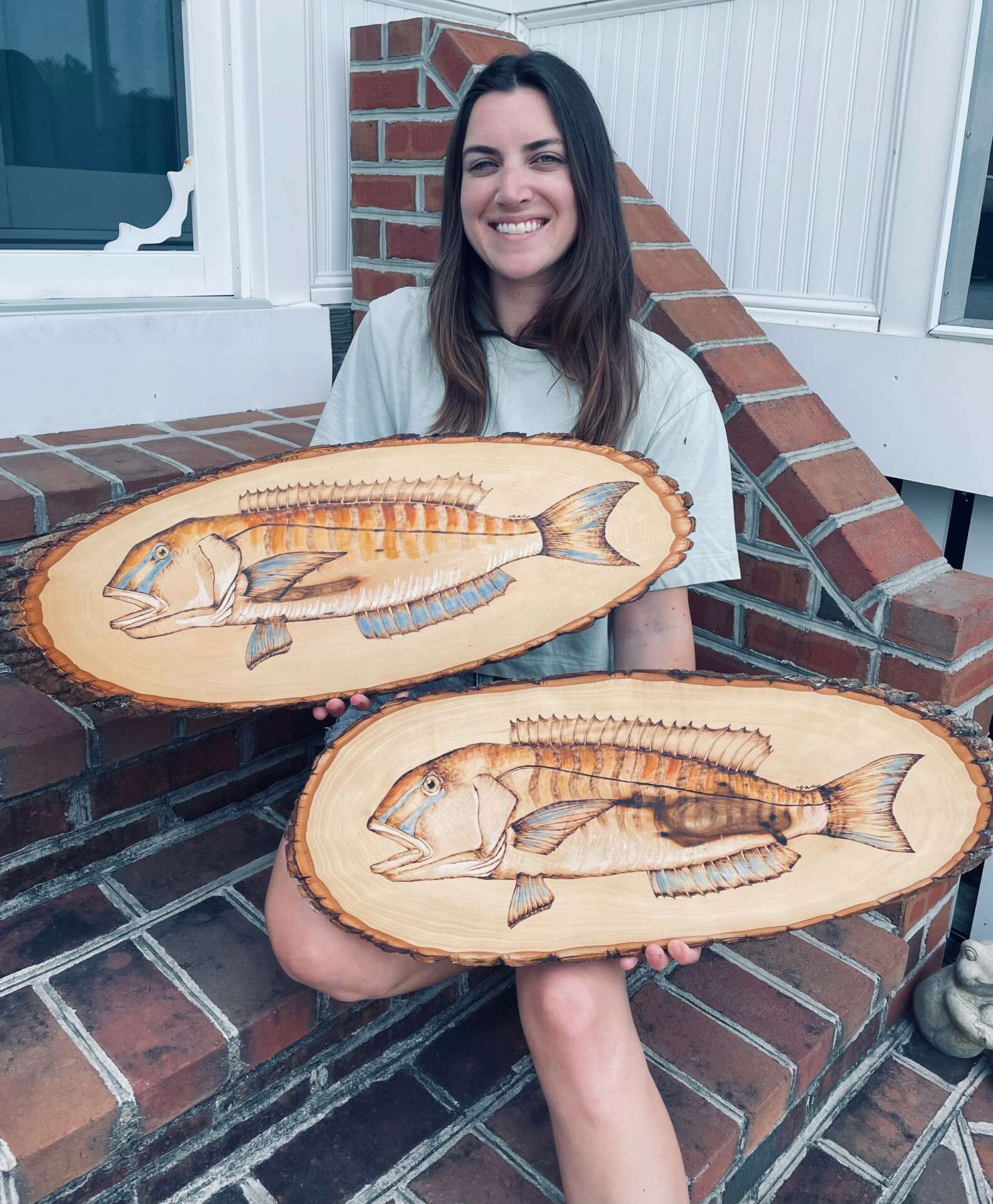We recently connected with Emily Caffrey and have shared our conversation below.
Emily, thanks for joining us, excited to have you contributing your stories and insights. Learning the craft is often a unique journey from every creative – we’d love to hear about your journey and if knowing what you know now, you would have done anything differently to speed up the learning process.
I’m a self-taught wood burner, so my process has been by trial and error (or should I say “trial by fire”). I’ve always had a talent for drawing, but it didn’t give me the total satisfaction that wood burning has. It’s almost like drawing with fire! Because it’s such a unique medium, I got hooked. It combined drawing with the extra pizazz I was looking for. Trying it out was easy; the hard part was learning which woods work best with the burner, which burning pen tips work best for different details, how much pressure is needed with the burning pen, learning personal safety with the wood burning tool, and (perhaps the hardest thing to learn) that the burn you make can’t be erased! An art teacher I had when I was young would say “If you don’t like what you do, turn it into something new.” This is advice I’ve referred to numerous times while wood burning – I’ve had to adapt to any and all accidental burns made and it’s part of the art-making process.


Emily, love having you share your insights with us. Before we ask you more questions, maybe you can take a moment to introduce yourself to our readers who might have missed our earlier conversations?
I focus mainly on aquatic wildlife because it’s what I know and love. I am a fisheries biologist by training, so I’ve spent a lot of time around fish and underwater diving. Learning about fishes (yes, “fishes” is correct) and seeing their behaviors in their natural environments has inspired me to share their unique forms with others.
I think wood burning is very niche – there aren’t a lot of us out there! It’s helpful and inspiring to talk with other wood burning artists for advice and ideas. After becoming comfortable with burning, I’ve been able to experiment and challenge myself more often. I’ve ventured into trying new types of wood, creating not just wooden plaques but skateboards, lazy susans, and charcuterie boards. I’ve also started to make stained glass art as well – another trial and error effort!
Following other artists and their different mediums gives me motivation to keep creating and to try new things.

Is there mission driving your creative journey?
Conservation and science are the main drivers of my creativity. This is what I want the takeaway of my work to be. I want people to understand the importance of fish and other wildlife that I portray. I think fish get a bad rap – a lot of people aren’t fond of them whereas I’m obsessed. Getting the opportunity to talk about their weird and wonderful adaptations is fun for me and I hope to pass that knowledge and appreciation onto others.

What’s the most rewarding aspect of being a creative in your experience?
The most rewarding aspect of being an artist is the connections that I’ve made with those I’d have not had interactions with otherwise. Art can act as a common ground for people of all different backgrounds, not just other artists, because it’s easy to appreciate. Whether you like fish, are interested in woodworking, are an artist using another medium, or are just an onlooker, the conversations and creativity that stem from those unlikely connections are energizing.
Another very rewarding aspect of being an artist is creating something that has sentiment. A lot of commissions I’ve created have had great symbolism and emotion tied to them for the buyer. I feel so honored to have a hand in special pieces like this.

Contact Info:
- Website: burnbabyburneac.com
- Instagram: @burnbabyburn_eac
- Facebook: Burn Baby Burn


